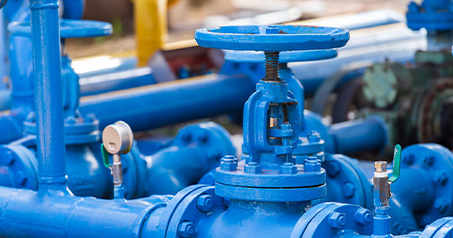Gru . 24, 2024 01:16 Back to list
Water Pressure Regulation Valve for Efficient Flow Control in Hydraulic Systems
Understanding Water Pressure Control Valves
Water pressure control valves are essential components in modern plumbing and irrigation systems. They regulate the pressure of water flowing in pipes, ensuring that the system operates efficiently and safely. This article explores the significance of these valves, their operation, types, and installation tips.
What are Water Pressure Control Valves?
Water pressure control valves are devices designed to manage and maintain the desired water pressure within a system. In many applications, excessive pressure can lead to pipe bursts, leaks, and damage to appliances, while insufficient pressure may result in inadequate water supply for usage. By automatically adjusting the flow of water, these valves help maintain a stable pressure, safeguarding the entire plumbing system.
How Do They Work?
The operation of a water pressure control valve primarily revolves around a diaphragm mechanism. These valves typically feature an adjustable spring that sets the desired outlet pressure. When the water pressure in the system exceeds this preset level, the diaphragm moves against the spring, causing the valve to close partially. Consequently, the flow of water is restricted until the pressure falls within the acceptable range, at which point the valve opens again. This automatic response helps to stabilize pressure fluctuations, providing consistent water supply and preventing damage due to excessive force.
Types of Water Pressure Control Valves
There are various types of water pressure control valves, each suited to specific applications
1. Pressure Reducing Valves (PRVs) These are the most common type, designed to reduce a high inlet pressure to a lower outlet pressure. PRVs are often found in residential water systems, where municipal supply pressure might exceed the home’s requirements.
2. Pressure Relief Valves These valves protect systems from excessive pressure by releasing water when the pressure exceeds a certain threshold. They are crucial in preventing pipe bursts and equipment damage.
3. Back Pressure Regulators Unlike standard PRVs, back pressure regulators maintain a specific pressure on the upstream side of the valve. They are often used in industrial processes where maintaining upstream pressure is critical.
4. Automatic Control Valves These valves are equipped with sensors and electronic controls to monitor and adjust water pressure in real-time, providing enhanced efficiency and responsiveness.
Importance of Water Pressure Control Valves
water pressure control valve

The importance of water pressure control valves cannot be overstated. Here are some reasons why they are critical for any plumbing or irrigation system
- Prevention of Damage By regulating excessive pressure, these valves prevent damage to pipes, faucets, and appliances, thereby prolonging their life and reducing repair costs.
- Optimized Water Usage In irrigation systems, managing water pressure can lead to more efficient water distribution, ensuring that plants receive the right amount of water without wastage.
- Increased Comfort In residential settings, maintaining consistent water pressure improves the overall comfort of water usage, providing better shower experiences and efficient appliance operation.
- Energy Efficiency By ensuring optimal pressure levels, these valves contribute to the overall energy efficiency of water heating systems, reducing energy costs over time.
Installation and Maintenance Tips
Proper installation and maintenance of water pressure control valves are essential for their effective operation. Here are tips to consider
- Correct Sizing When selecting a valve, ensure it is appropriately sized for your system. A valve that is too large or too small can lead to inefficiencies.
- Regular Inspections Periodically check the valve for signs of wear or damage. Look for leaks at the connection points and inspect the diaphragm for cracks.
- Adjust Settings as Needed As household water usage or system demand changes, you may need to adjust the pressure settings on the valve to maintain optimal performance.
- Professional Assistance If you're unsure about installation or maintenance, it’s wise to consult a plumbing professional. They can offer expert advice tailored to your specific system needs.
Conclusion
Water pressure control valves play a crucial role in maintaining the health and efficiency of plumbing and irrigation systems. By understanding their function and importance, homeowners and facility managers can better appreciate the value they bring. Proper installation and maintenance will ensure that these valves continue to perform effectively, preserving the integrity of the entire water system for years to come.
-
Water Valve Gate Design Prevents Leakage and CorrosionNewsJul.11,2025
-
Steel Fab Table Features Reinforced Construction for LongevityNewsJul.11,2025
-
Specialized Valve Designs for High Pressure SystemsNewsJul.11,2025
-
Machinist Gauge Pins Feature Ground and Lapped FinishesNewsJul.11,2025
-
Hose Check Valve Prevents Backflow in Irrigation LinesNewsJul.11,2025
-
Durable Micrometer Tools Withstand Heavy Workshop UseNewsJul.11,2025
Related PRODUCTS









